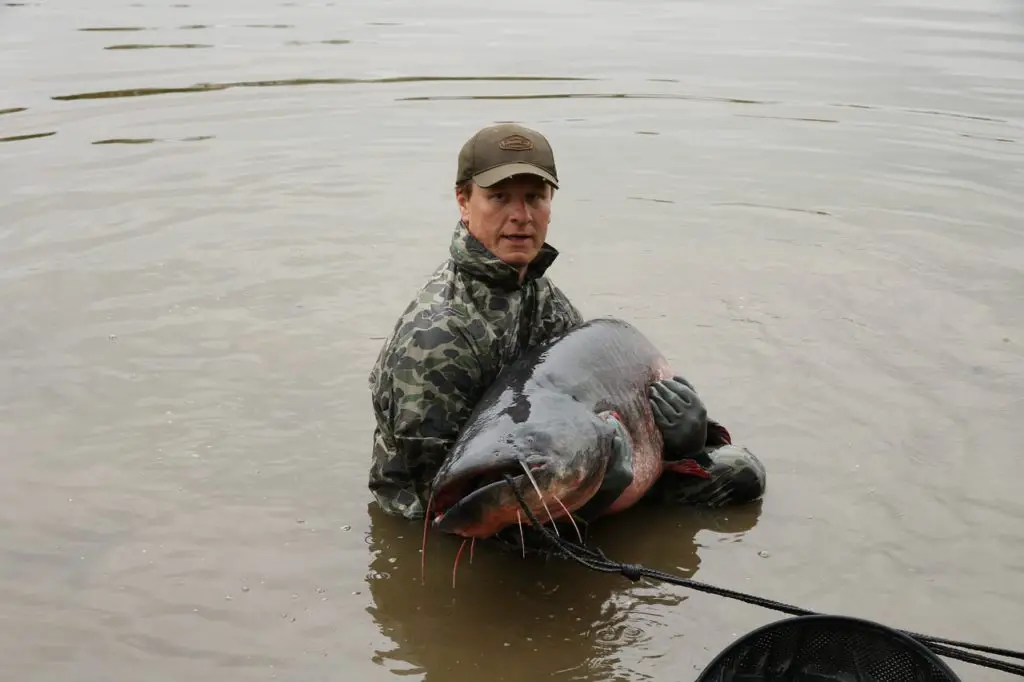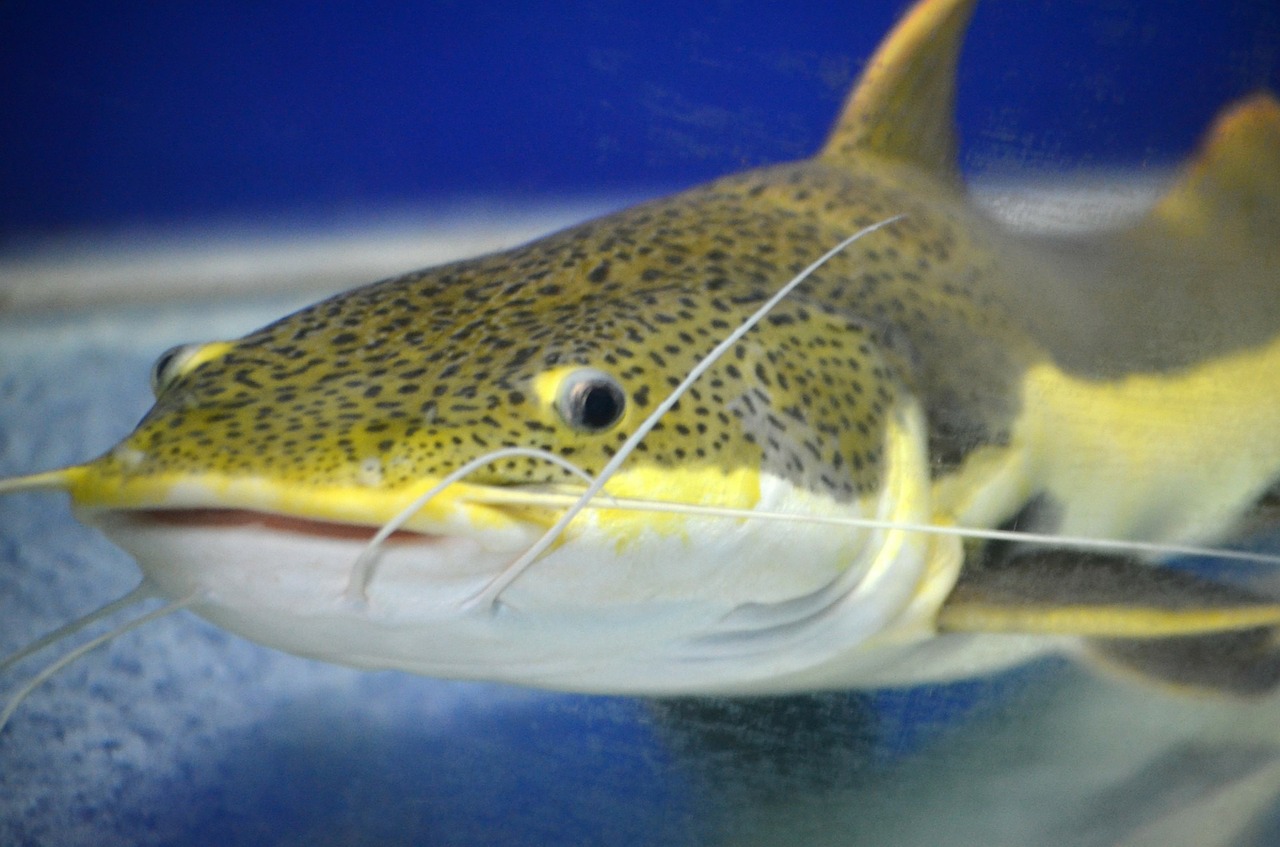For those who don’t know, bottom feeders are fish that live at the bottom of bodies of water and eat whatever is in the sediment. Catfish are called bottom feeders, but are they?
Or do they just have an undeserved reputation for being one? In this blog post, we will answer these questions and more.
Are Catfish Bottom Feeders?
Yes, but not all species of catfish are known to be bottom feeders. Some of the bottom feeders are called “scavengers,” which means they will consume whatever is available.
Catfish scavengers include those in the Ictaluridae family, such as bullheads. The cory catfish is also a bottom feeder but is not in the Ictaluridae family.

Bottom Feeder Appearances
Catfish that get their food from eating off the sediment at the bottoms of bodies of water have a specific appearance.
They often have barbels near their mouths for sensing what’s going on around it or under it, and whiskers all over its body to find small prey items like worms and insect larvae hiding in crevices in rocks or sand.
Bottom-feeding fish may also be prone to developing excess slime coatings because they’re constantly rubbing up against things during their food search.
Bottom Feeder Behavior
Bottom-feeding fish are often slow-moving and spend a lot of time just sitting around, waiting to find the next meal.
They also have an elongated body that is well equipped with sensory organs like those mentioned above and small scales on their skin for catching prey items when they brush up against them while swimming in dark water environments.
These fish enjoy living at the bottom of bodies of water because there’s plenty there to eat.
Feeding Strategies
Some bottom-feeding fish are detritivores, which means they eat dead and decaying matter on the bottom of bodies of water. Others, like catfish in general, may also be scavengers as well as detritivores.
Bottom-feeding fish use their whiskers to find small prey items while stirring up sediment at the bottoms of lakes or rivers with their noses for a meal when food is scarce.
This activity can make them appear more aggressive than they are because it’s hard to tell that these types of fish have such passive dispositions.
Bottom Feeding Catfish Physiology
The physiology of bottom-feeding catfish includes a large mouth with teeth that help them consume the small prey items they find.
As previously mentioned, whiskers are another important part of this type of fish’s appearance and behaviour. They’re also equipped with sensory organs like barbels
which allow it to sense what’s happening around or under it in murky water environments where movements can be challenging to detect from afar.
Which Catfish Species are Not Bottom Feeders?

The darter catfish is not a bottom feeder. This type of fish eats smaller organisms like crustaceans and aquatic insects present in the water column with them, rather than at the bottom where they live.
Others include the blue catfish and the channel catfish. These types of fish just filter-feed on algae or plankton in water columns without needing to be close to sediment like bottom feeders.
Bottom Feeder Predators
Many predators take advantage of bottom-feeders. This includes other predatory fishes (eelpouts) who live primarily off the ocean floor and jellyfish whose tentacles reach down into crevices near the sediment to find prey like catfish.
Bottom Feeders for the Home Aquarium
Some people keep bottom-feeding catfish like the cory in their home aquarium to help maintain its water quality. These types of fish are often used as scavengers, which means they will consume whatever is available to them with no preference or discrimination between meaty edibles and decaying matter.
They’re also fun species because they seem more curious about what’s going on in an environment than other fishes. These breeds usually live near the floor of bodies of saltwater that can be highly difficult to see through due to sediment stirred up by waves or currents.
Bottom feeder catfish may not need bright lighting when kept in a tank, but this depends on where you place it within the aquarium.
Do Bottom-feeding Catfish Only Feed at the Ocean Floor?
Bottom feeders can search for food and feed in different layers of water. The catfish is not an exception.
A catfish may even find a free meal while swimming close to the surface of the water or near rocks at the bottom of bodies of saltwater that can be highly difficult to see through due to sediment stirred up by waves or currents.
What Does the Bottom Feeder Like to Eat the Most?
Bottom feeders will eat anything they can find, but many of them tend to focus on decaying matter.

This is a result of their feeding strategy, which means that these types of fish don’t discriminate when it comes to food and can eat meaty edibles and what’s considered the decaying matter at the bottom (either near or in) bodies of water.
What Other Fish Are Bottom Feeders?
Several other fish are considered bottom feeders. They include the eelpouts who live primarily off the ocean floor and jellyfish (like certain species of moon jellies)
whose tentacles reach down into crevices near the sediment to find prey like catfish. Others include the Grouper, Snapper, Bass, and Crayfish.
Best Baits for Bottom Feeder Fish
Some of the best baits for bottom feeders include sardines, anchovies, and molluscs. Also, rotting seafood is a type of bait that some people use.

The best advice for bottom feeders when it comes to food or baits is to be as creative as you can and experiment with different ingredients until you find something the catfish in your aquarium likes.
Best Fishing Methods for Bottom Feeder Fish
Bottom feeder fish are among the most difficult types of fish to catch because they often stay near or in murky water environments where movements can be difficult to detect from afar.
However, bottom-feeding catfish still have a few weaknesses that fishermen may use for bait and tackle:
- Dropping live baits like worms into crevices
- Using a monofilament line with large hooks attached on either end (known as “circle hook”) so that it traps them once they take the bait
- Setting up netting across entrances or exits from areas where these fishes feed at night and waiting patiently until you capture them when they swim through during feeding time.






